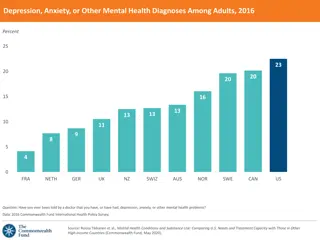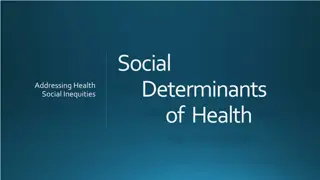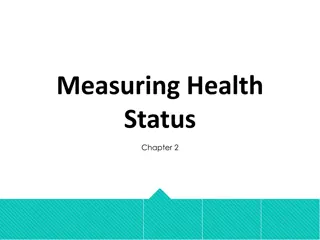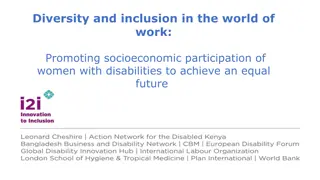Understanding Social Gradients in Health and Socioeconomic Status
This presentation delves into the complexities of social gradients in health and socioeconomic status, highlighting the impact of indicators such as employment status, education, poverty, and housing tenure. It emphasizes the need to reassess indicators used for determining socioeconomic status and discusses the disadvantages beyond SES and social capital. Additionally, it examines social and ethnic inequalities in health, drawing attention to disparities among different ethnic groups in England. Acknowledgements are also given to the research studies that have contributed to this field.
Download Presentation

Please find below an Image/Link to download the presentation.
The content on the website is provided AS IS for your information and personal use only. It may not be sold, licensed, or shared on other websites without obtaining consent from the author. Download presentation by click this link. If you encounter any issues during the download, it is possible that the publisher has removed the file from their server.
E N D
Presentation Transcript
Social gradients in health health socioeconomic status
Social gradients in health health socioeconomic status
Explanation 1 We are using the wrong indicators of SES Woman s employment status Able to afford two pairs of all weather shoes Baby s father s employment status Able to afford enough money to keep home in decent state of decoration Mother s education Baby s father s education Able to afford household contents insurance Subjective poverty Able to afford money to make regular savings of 10 a month Being in receipt of means tested benefits Able to afford money to replace any worn out furniture Up to date with bills Able to afford money to replace or repair major electrical goods Housing tenure Able to afford a small amount of money to spend on yourself each week Able to afford a holiday from home for at least one week once a year Able to afford a hobby or leisure activity Able to afford family and friends for a drink or meal at least once a month In winter are you able to keep home warm enough
Explanation 2 & 3 Disadvantage beyond SES & social capital
Social and ethnic inequalities in health 37% Births in England in 2016 to ethnic minority parents Disproportionally lower down the social ladder Sometimes better health, sometimes worse
Acknowledgements This presentation was based on a study with the Born in Bradford cohort: Uphoff, Eleonora P., Kate E. Pickett, and John Wright. "Social gradients in health for Pakistani and White British women and infants in two UK birth cohorts." Ethnicity & health 21.5 (2016): 452-467. And work by: Dr Lesley Fairley and colleagues Fairley, Lesley, et al. "Using latent class analysis to develop a model of the relationship between socioeconomic position and ethnicity: cross-sectional analyses from a multi-ethnic birth cohort study." BMC public health 14.1 (2014): 835. Ben Mallicoat, MSc Paper under review























